A pencil artist reveals helpful negative drawing tips to produce vibrant highlights, textures, grasses, hair, feathers, fur and more!
Negative drawing is a drawing technique in which the artist uses the white of the drawing paper (negative space) and surrounds it with positive marks (positive space) to build up the darkest values with layers of graphite.
While browsing Instagram one day, I was immediately captivated by the beautiful animal drawings of pencil artist, Kathryn Hansen. It’s wonderful to have Kathryn share her drawing tips with us.
*****
Heron My Own Again, aka Edgar was inspired by my many trips to beautiful Balboa Lake in Van Nuys, CA. What I love about Edgar is not only his simple beauty but that he has a full range of values in his portrait.
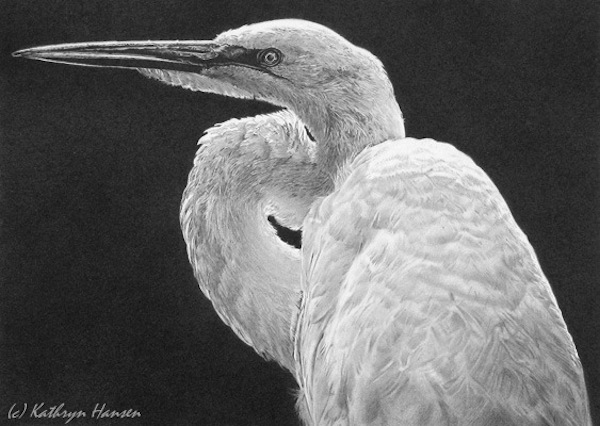
Values are so critical in creating dynamic graphite drawings. Values help produce the illusion of 3D on a 2-dimensional surface. It’s one of the most important negative drawing skills to learn as a realistic pencil artist to bring your drawings to life.
“Value does all the work and color gets all the glory,” author unknown.
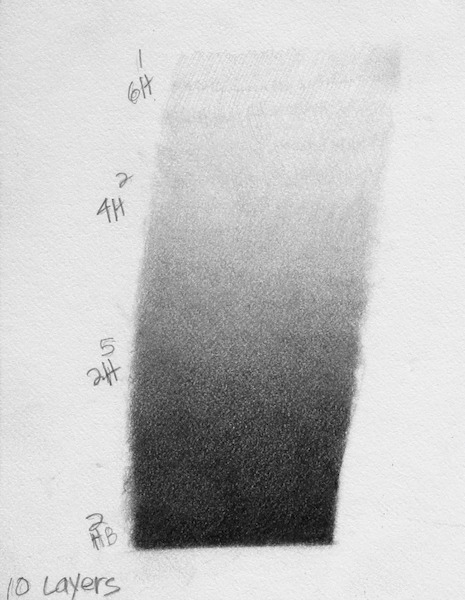
Value is the degree of lightness and darkness in your drawing. Proper value will give your animal volume, show the texture of the animal and indicate the direction of your light source. Basically values are your best ally as a graphite artist.
My method of drawing could be interpreted as negative drawing.
To explain, the white (my lightest value) is the color of the paper and from there I build up to my darkest value with layer after layer of graphite.
I draw in a circular motion to form tiny intertwining circles which creates one continuous tone.
This achieved by using a Tombow graphite pencil, grade 6H and gradually work up to an HB.
For this dark background it took approximately 10-12 layers. I know it sounds monotonous, but this way of layering keeps the integrity of the paper intact and allows each successive layer to lie nicely on top of the last.
I use a light touch technique, and twirl my pencil every now and then to keep the graphite point sharp.
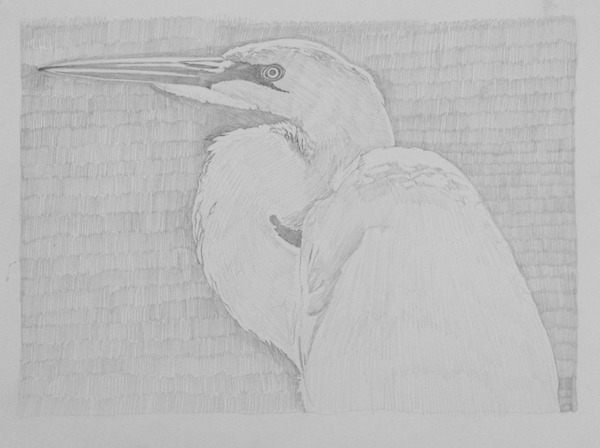
As I build up the background I also get to work on Edgar. I start with the most important part to me, his eye, as this will dictate his personality when I get it right.

I pay very close attention to my reference photo and every twist and turn the feathers take along his body. Feathers grow from specific regions on an egret’s body; these feather groups define the shape and contours of the bird.
The pencil is an ideal precision tool for laying in these feather patterns to help depict his body realistically. As I go along I am always watching for where the light hits his feathers so each stroke of my pencil is deliberate, starting light with a 4H pencil then working up to a 2H.
I keep my pencil razor sharp at all times for crisp details. As you can see some of my darkest values on Edgar are right around his eye, which draws your attention right to it, creating a nice focal point to this drawing.
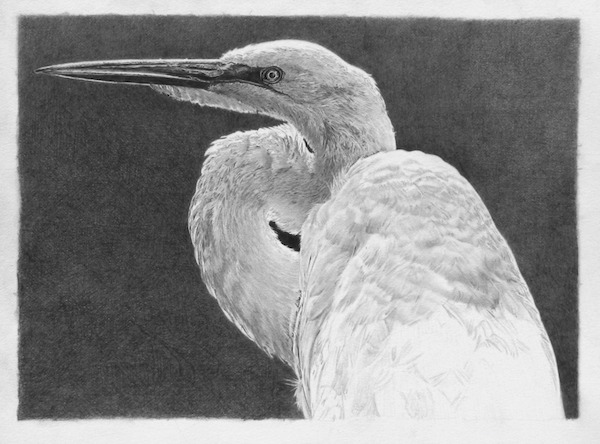
I tend to squint A LOT at my drawing to make sure my values are correct and every now and then I do a mirror check as well…always making sure the values are true.
In the finishing phase of my drawing I go into what I call noodling, where I go around my drawing and fill in some of those valleys from the tooth of the paper to make the background one continuous tone. I also go back over my dark areas on Edgar to punch them up again with an HB pencil.
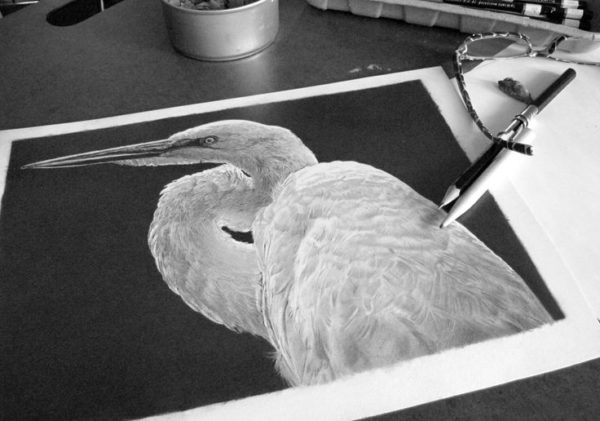
Some helpful drawing hints:
- When drawing animals be sure to study their anatomy and behavior. I sat for hours on 3 different occasions watching Edgar along the shoreline catching huge dragonflies’ that were serpentining on the lake. I also watch a lot of live feed cameras on HDOnTap, the eagles in Hanover, PA and great horned owls in Savannah Georgia are among my favorites.
- Have good reference materials. Mistakes happen in drawing when you start drawing from memory. To avoid this, make sure you are always studying your reference image and taking your cues from it.
Happy drawing!!
*Materials used: Strathmore Bristol Board 500 series, Tombow pencils 6H, 4H, 2H, H & HB, tortillions, kneaded and Sumo-Grip erasers.
Guest artist/author: Southern California artist, Kathryn Hansen received her BFA degree in studio arts from the University of Stevens Point, WI in 1983. She went on to study art at the Milwaukee Institute of Art and Design, the Associates of Art in Sherman Oaks, CA and studied under Margo Lennartz in La Crescenta, CA. The foundation of Kathryn’s work is in capturing the essence and soul of the animals she draws.







